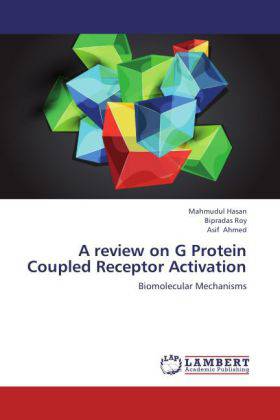
- Afhalen na 1 uur in een winkel met voorraad
- Gratis thuislevering in België vanaf € 30
- Ruim aanbod met 7 miljoen producten
- Afhalen na 1 uur in een winkel met voorraad
- Gratis thuislevering in België vanaf € 30
- Ruim aanbod met 7 miljoen producten
Zoeken
A review on G Protein Coupled Receptor Activation
Biomolecular Mechanisms
Mahmudul Hasan, Bipradas Roy, Asif Ahmed
Paperback | Engels
€ 61,95
+ 123 punten
Omschrijving
G Protein Coupled Receptors (GPCRs) are a large family of seven transmembrane (TM) helical structural motif containing proteins that regulate cellular communication. Based on sequence similarity within the seven TM segment in human, the major five GPCR families are rhodopsin,secretin, glutamate, adhesion and frizzled/taste. GPCRs are principle signal transducer that activate senses of sight, smell and test, and responsible for many signaling disorders and diseases. Molecular mechanisms of GPCR activation are always implicated as a therapeutic purpose to discover new drug targets. Several molecular mechanisms and models of GPCR activation have been proposed. Dimerization, protonation, conformations due to intramolecular interaction and specific conformational changes are thought to be responsible for receptor activation. In this review, these mechanisms and proposed model systems are discussed in detail.
Specificaties
Betrokkenen
- Auteur(s):
- Uitgeverij:
Inhoud
- Aantal bladzijden:
- 60
- Taal:
- Engels
Eigenschappen
- Productcode (EAN):
- 9783659231728
- Verschijningsdatum:
- 4/09/2012
- Uitvoering:
- Paperback
- Afmetingen:
- 152 mm x 229 mm
- Gewicht:
- 100 g

Alleen bij Standaard Boekhandel
+ 123 punten op je klantenkaart van Standaard Boekhandel
Beoordelingen
We publiceren alleen reviews die voldoen aan de voorwaarden voor reviews. Bekijk onze voorwaarden voor reviews.








